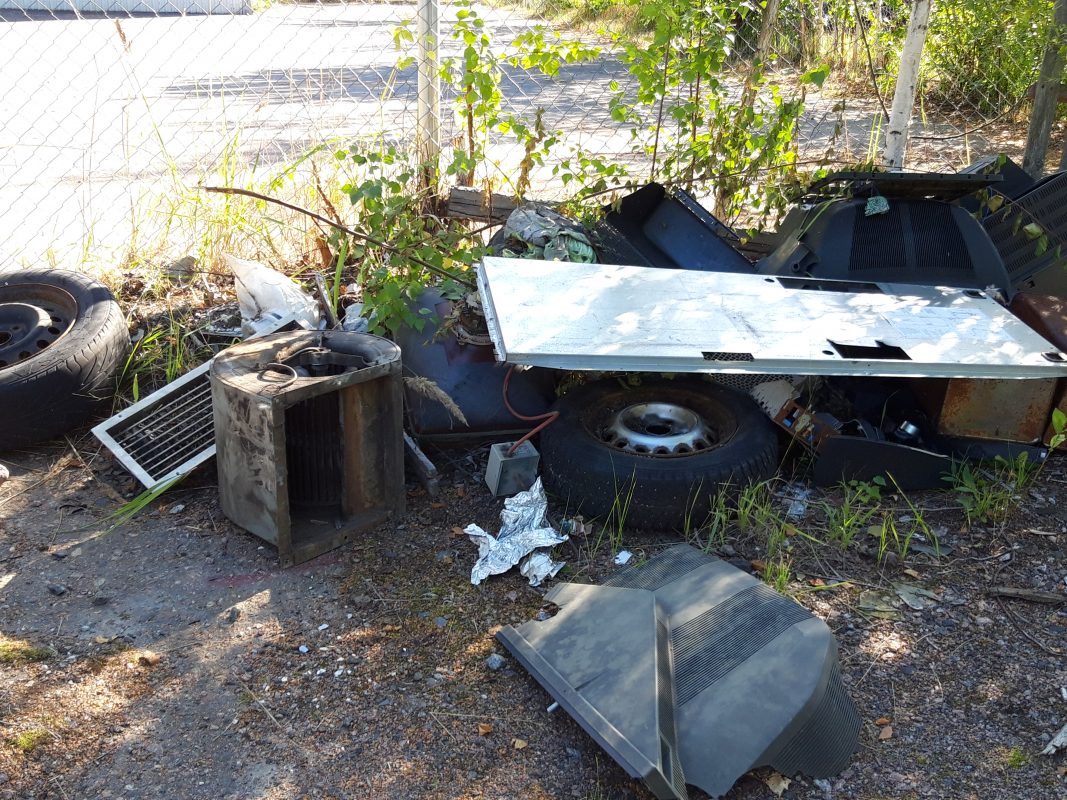An environmental inspector at work – the case of the littered car park
An active city resident has submitted a concerned report of a messy car park via the City of Helsinki’s feedback system: there are car wrecks and debris strewn about all around the area. Follow the work of a City of Helsinki environmental inspector as they tackle the issue.

The report concerning the littered car park reaches my desk one spring Monday morning. I immediately notice that the place is familiar to me; requests to have the area cleaned have been issued in previous years as well. The area in question is a car park leased out for the shared use of local companies, which are also jointly responsible for the maintenance of the area. With no one being primarily responsible, I know from experience what happens in cases like this – no one is taking care of cleaning the area.
One of the lessees of the car park has previously arranged the cleaning of the area at their own expense following a request issued by an environmental inspector. Now, however, they are saying, quite understandably, that they will no longer take sole responsibility for cleaning the area. In this situation, I consider it my duty to find a permanent solution to the problem. As such, I send a hearing letter to all the lessees of the car park, asking them to express their opinions on a potential order to have the area cleaned. The letter also informs the lessees that non-compliance can lead to a conditional fine. The risk of losing money usually gets people moving more effectively than the risk of environmental pollution.
After sending my letter, I discover that my information on the lessees is not entirely up to date, as a result of which some of the letters are delivered to the wrong parties. Based on the responses that I receive from the actual lessees, some of them were unaware of the obligations of their lease agreement. What follows is a busy period of telephone discussions and email exchange between me and the lessees. In the end, the lessee who used to take care of cleaning the area before steps in once more and arranges for the car wrecks to be taken away and for the other debris in the area to be cleared. Some of the other lessees also decide to help with cleaning the area, and in the end the car park is successfully cleared of debris. Issuing an order enforced with a conditional fine is thus unnecessary, which is certainly the best outcome for everyone.
One of the most challenging aspects of my work is acting as a mediator between different parties. This case was a good example of this, as I had to urge the lessees multiple times over several months to come to an agreement on how to take care of the cleanliness of the area going forward without the authorities having to repeatedly intervene.
Whether the lessees of the car park will now take the maintenance of the area seriously still remains to be seen. It is important that they do, as litter not only reduces the pleasantness of an area, but also poses a risk to nature and the environment if waste ends up spreading into the environment and on to water bodies.
Whatever the case may be, my work on the matter is done for now, and hopefully our city has one less regularly littered area as a result – sometimes it doesn’t take much to make a difference!
The writer is a City of Helsinki environmental inspector.